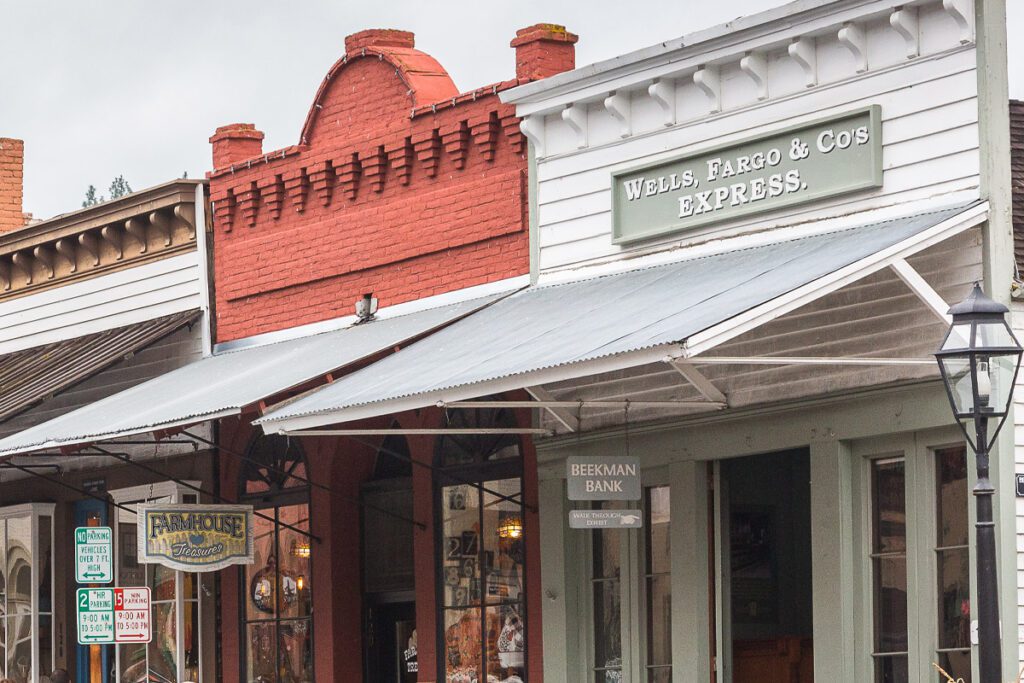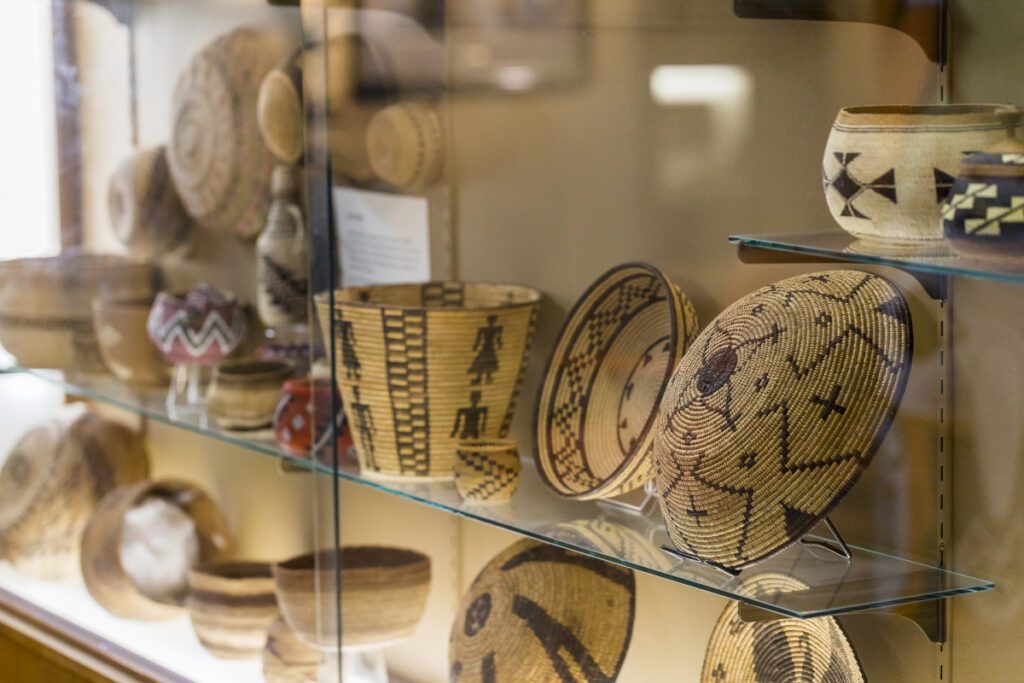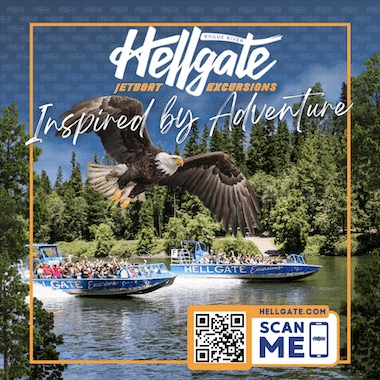From the ice age to the Gold Rush, these spots bring the region’s history to life.
Southern Oregon’s rich history spans millennia, influenced by everyone from Indigenous people to prospectors, farmers and ranchers, and more who have made their mark on the region. Visitors can delve into the past at museums and historic sites that tell their stories. Here are a few of our favorites.

History Adventures From Roseburg to Cave Junction
If you’d like to see mastodon tusks or covered wagons, Douglas County Museum in Roseburg is the place for you. It spans pre-agricultural history of the Umpqua Valley to the industrial age, even featuring locomotives and other heavy machinery. Learn more about the traditions of the area’s Native tribes through a display of beaded garments, and see family quilts that traveled the Oregon Trail.
The well-preserved Wolf Creek Inn & Tavern is well worth a stop. Built in 1883 and listed on the National Register of Historic Places, it was once a stagecoach stop between San Francisco and Portland; it remains Oregon’s longest-operating hotel. Inside you’ll find a restaurant and rooms filled with historic photos and artifacts — including tales of famous guests like Clark Gable and Jack London — and perhaps a ghost tale or two.
Speaking of ghosts, road-trippers may want to venture 3 miles east to the nearby ghost town of Golden, now home to the Golden State Heritage Site. By the 1850s, it was a bustling gold-mining camp with prospectors panning at Coyote Creek, and in the 1890s, a full-fledged town. By 1920 it was abandoned. Only a few buildings remain.
If you’re interested in firefighting technology and history, consider a stop at the Siskiyou Smokejumper Base Museum in Cave Junction. This National Historic site features a parachute loft, training facilities and photo exhibit related to the facility while it was in use from 1943-1981. Check out the jump suits and equipment used by the brave crews that jumped from planes into thick forests to put out small wildfires before they could spread. Docents — many of whom were smokejumpers — provide guided tours from March 15 – Nov. 15; self-guided tours are offered year-round.

Gold Fever in the Rogue Valley
It’s hard to overstate the impact that the mid-1800s Gold Rush had on the Rogue Valley, when prospectors raced to the area to stake a claim. Today’s visitors rush to the Rogue Valley for world-class rafting and award-winning wines, but it’s easy to imagine those heady days at the Gold Hill Historical Society Museum. It’s located in the first home in town to have indoor plumbing — thanks to the owner’s success in gold mining. Check out claim maps and other tools from the industry.
Jacksonville — a Rogue Valley town that’s so well preserved, the whole location appears on the National Register — was once the largest outpost north of San Francisco. The 1863 Beekman Bank Museum was where many lucky prospectors sold their nuggets. Between Memorial Day and Labor Day, costumed docents share stories of late-19th-century banking practices, and visitors can go into the vault that once stored millions in gold. The nearby Beekman House features original furnishings and gives a glimpse of life during the Victorian era in a Western gold-boom town.
Road-trip a few miles northeast of Jacksonville to the historic Hanley Farm. The family compound, built around 1857, is still a working farm that’s open to the public select days and times, including the Scarecrow Festival in late October, when visitors can tour the home and take a hayride. The farm is part of the Southern Oregon Historical Society in downtown Medford, whose new museum should be opening in 2024.

Native American & Ranching History in the Klamath Basin
Take a road less traveled to explore Oregon’s Klamath Basin and Lakeview, a diverse and breathtaking landscape rich with Indigenous, cowboy and even WWII history. The area is still quite sparsely populated, providing a contemplative backdrop for delving into history.
Start at downtown Klamath Falls’ Favell Museum, where you can learn about the Klamath, Modoc, and Paiute Yahooskin people through artifacts, ancient stone tools, regalia, beadwork, basketry and more. Klamath County Museum features a special exhibition about the Modoc Indian War, a tragic conflict that took place in the 1870s.
Embark on a self-guided audio driving tour of Modoc territory, narrated by Cheewa James, great-granddaughter of Modoc warrior Chkeitko. The driving tour stops at numerous points of interest, including the Merrill Historical & Modoc War Museum, which tells the story of the war in photos and artifacts, and has a room dedicated to local artist Carl Barks, creator of Donald Duck and his friends.
Set on a lonesome prairie about 35 miles north of Klamath Falls, Fort Klamath Park Museum is a Civil War-era military outpost where troops were tasked with protecting settlers during that time. Several original outbuildings remain, and a small, seasonal museum holds artifacts from the era, with a knowledgeable curator eager to relay the site’s history.
Take a 75-mile scenic drive east of Klamath Falls to Lakeview, the high-elevation home of the new MC Chuck Wagon Western Heritage Exhibit. It’s a tribute to one of Oregon’s largest ranching operations, which spanned nearly a million acres and 19,000 cattle in its heyday. The self-serve exhibit explores the heritage of working cowboys and the chuck wagon that provided a moveable feast to the MC buckaroos. See saddles, bedrolls, chaps, hats and other gear used by MC cowboys, as well as interpretive panels and touch-button recordings that bring the whole operation to life.



